Cleaning a clogged bathroom sink drain can be a frustrating and time-consuming task. It’s a common problem that many homeowners face, but it’s also one that can be easily solved with the right tools and techniques. In this article, I will share with you some tips and tricks for cleaning a clogged bathroom sink drain, so you can get back to your daily routine without any hassle.
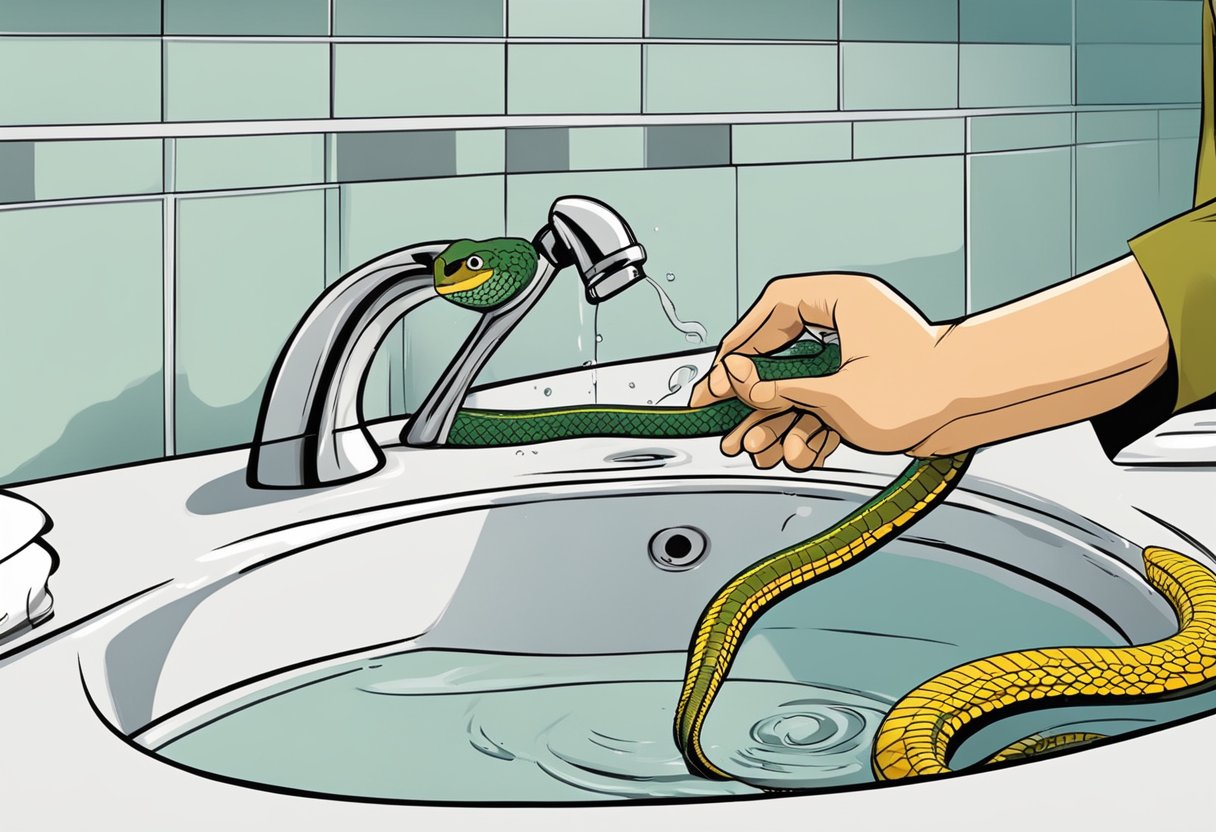
Understanding the problem is the first step to solving it. A clogged bathroom sink drain can be caused by a variety of factors, including hair, soap scum, toothpaste, and other debris that accumulate over time. Identifying the cause of the clog can help you determine the best course of action to take when cleaning it. With the right tools and techniques, you can easily remove the clog and prevent it from happening again in the future.
Key Takeaways
- Understanding the cause of the clog is the first step to solving the problem.
- Essential tools for cleaning include a plunger, baking soda, vinegar, and a drain snake.
- Regular maintenance and prevention can help avoid future clogs.
Understanding the Problem
https://www.youtube.com/watch?v=LpDLynrXln8&embed=true
When you have a clogged bathroom sink drain, it can be frustrating and inconvenient. The water may drain slowly or not at all, and you may notice unpleasant odors coming from the drain. It’s important to understand the common causes of clogs in order to prevent them from happening in the future.
One of the most common causes of clogs in bathroom sink drains is hair. When you wash your hair, some of it inevitably falls out and can get caught in the drain. Over time, this hair can accumulate and create a clog. Other common culprits include soap scum, toothpaste, and other hygiene products. These substances can build up in the drain and prevent water from flowing freely.
Another issue that can lead to clogs is the design of the sink drain itself. Some sinks have a narrow drain that is more prone to clogging than others. If you have an older sink, it may be more susceptible to clogs due to wear and tear over time.
It’s important to address clogs as soon as you notice them, as they can worsen over time and lead to more serious plumbing issues. In the next section, I’ll go over some effective methods for unclogging a bathroom sink drain.
Identifying Common Causes
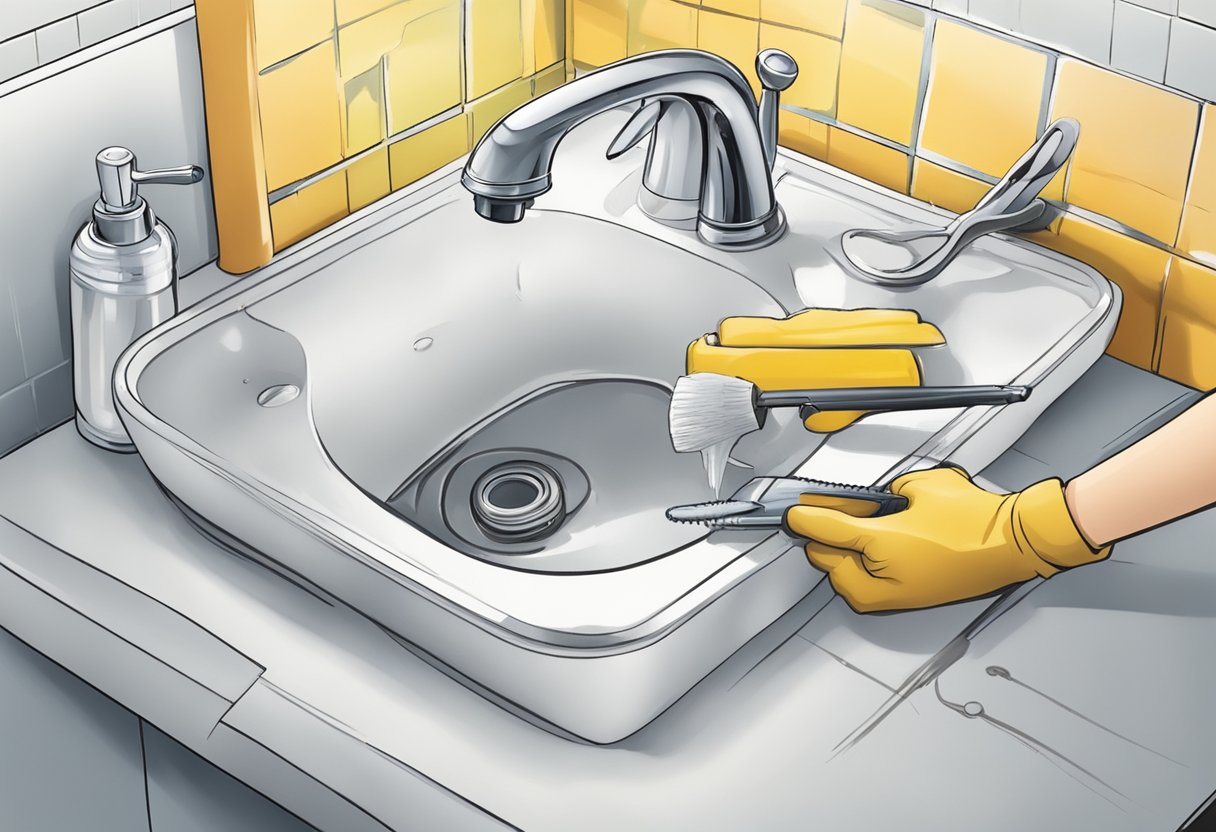
As someone who has dealt with clogged bathroom sink drains before, I know how frustrating it can be. The first step in unclogging a drain is identifying what caused the clog in the first place. Here are some common causes of clogged bathroom sink drains:
Hair and Debris
Hair and debris are some of the most common culprits of clogged sink drains. Over time, hair and other debris can accumulate in the drain and cause a blockage. To prevent this, consider using a drain strainer to catch hair and other debris before it goes down the drain.
Soap Scum and Grease
Soap scum and grease can also cause clogs in bathroom sink drains. When soap and grease mix with water, they can create a sticky substance that can build up in the drain and cause a blockage. To prevent this, try to limit the amount of soap and grease that goes down the drain.
Toothpaste and Other Chemicals
Toothpaste and other chemicals can also cause clogs in bathroom sink drains. Toothpaste contains ingredients like fluoride and calcium that can build up in the drain and cause a blockage over time. Other chemicals like makeup and cleaning products can also contribute to clogs. To prevent this, try to limit the amount of chemicals that go down the drain.
By identifying the common causes of clogged bathroom sink drains, you can take steps to prevent them from happening in the first place. Consider using a drain strainer, limiting the amount of soap and grease that goes down the drain, and being mindful of the chemicals that you use in the sink.
Essential Tools for Cleaning
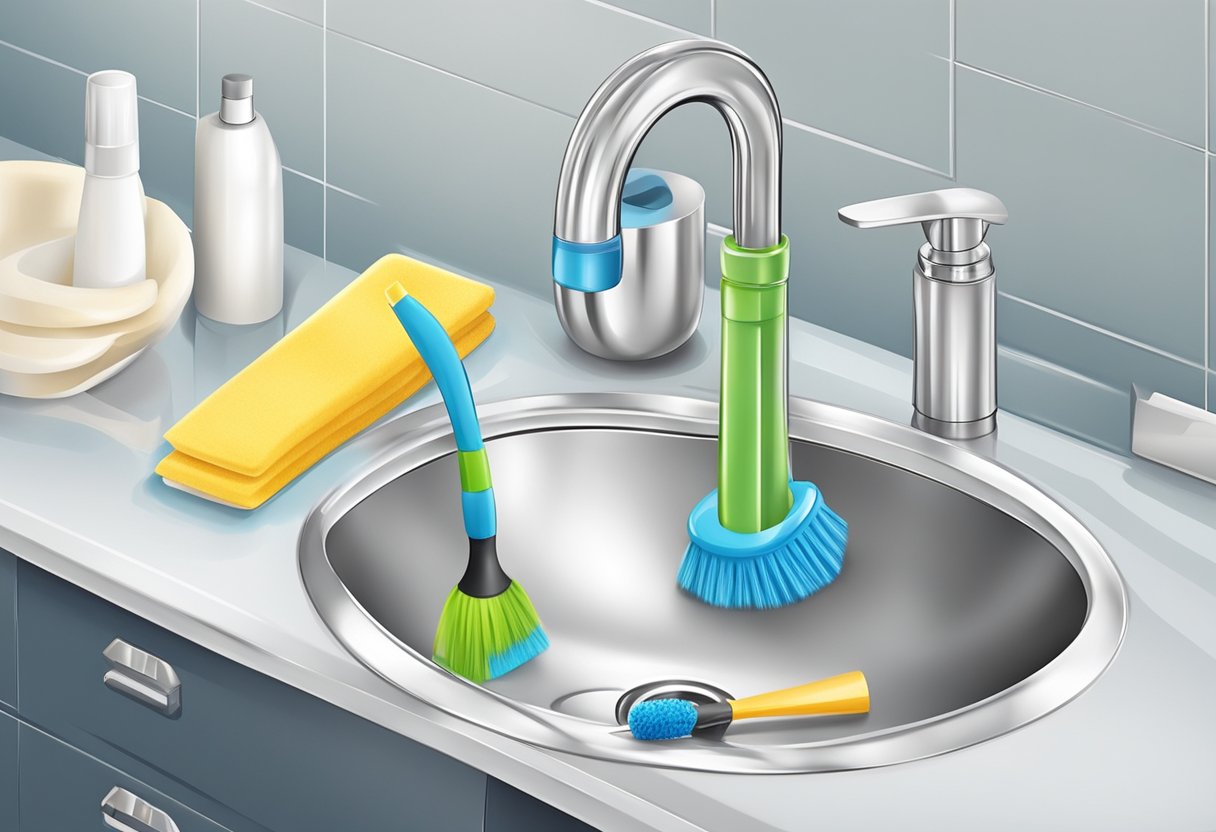
Cleaning a clogged bathroom sink drain can be a hassle, but with the right tools, it can be a breeze. Here are some essential tools that you should have on hand to unclog your bathroom sink drain:
Drain Snake and Auger
A drain snake or auger is a long, flexible tool that can be used to reach and remove clogs that are deep in the drain. It is especially useful for removing hair clogs. To use a drain snake, insert the tip of the snake into the drain and turn the handle to rotate the snake. This will help to break up the clog and pull it out of the drain.
Plunger and Sink Plunger
A plunger or sink plunger is a simple tool that can be used to remove clogs that are closer to the surface of the drain. To use a plunger, place the plunger over the drain and push down firmly. Then, pull up quickly to create suction and force the clog out of the drain.
Homemade Solutions
If you don’t have any specialized tools on hand, you can still unclog your bathroom sink drain using common household items. One effective solution is to mix equal parts baking soda and white vinegar and pour it down the drain. Let it sit for a few minutes, then flush the drain with hot water. Another option is to mix equal parts lemon juice and baking soda or apple cider vinegar and baking soda. Alternatively, you can mix a cup of hydrogen peroxide with a tablespoon of dish soap and pour it down the drain.
Having these tools on hand can help you quickly and easily unclog your bathroom sink drain. Remember to always follow safety precautions when using any tools or chemicals.
Step by Step Cleaning Process
https://www.youtube.com/watch?v=hdnJRFgVW-M&embed=true
Cleaning a clogged bathroom sink drain can be a hassle, but with the right tools and a bit of patience, it can be done easily. Here is a step-by-step process for cleaning a clogged bathroom sink drain.
Removing the Stopper
The first step in cleaning a clogged bathroom sink drain is to remove the stopper. Pop-up stoppers can be removed by pulling them straight up and out of the drain. Other types of drain stoppers may require a bit more effort. You may need to unscrew the pivot rod or use pliers to remove the stopper assembly. Be sure to have rubber gloves on hand to protect your hands from any gunk that may be lurking in the drain.
Using a Plunger
If the clog is not too severe, a plunger can be used to clear the blockage. First, make sure there is enough water in the sink to cover the plunger. Next, place the plunger over the drain and push down and up rapidly several times. This should create suction and force the clog through the drain. If this method doesn’t work, try using a drain cleaner.
Employing a Drain Snake
If the plunger doesn’t work, a drain snake can be used to clear the clog. A drain snake is a long, flexible tool that can be inserted into the drain to break up and remove the clog. To use a drain snake, insert the snake into the drain and turn the handle clockwise. This will help the snake to move through the drain. Once you reach the clog, turn the handle counterclockwise to break up the clog. Pull the snake out of the drain and dispose of any debris that may have come out with it.
Applying Homemade Solutions
If you prefer to use natural methods to clean your clogged bathroom sink drain, there are a few homemade solutions you can try. One of the most popular methods is to mix equal parts baking soda and vinegar and pour it down the drain. Let it sit for a few minutes, then pour boiling water down the drain to flush the clog out. Another method is to pour boiling water down the drain and follow it up with a cup of baking soda. Let it sit for a few minutes, then pour a cup of vinegar down the drain. Let the mixture sit for a few more minutes, then flush the drain with boiling water.
Cleaning a clogged bathroom sink drain can be frustrating, but with these simple steps, you can get your sink back to working order in no time.
Preventing Future Clogs
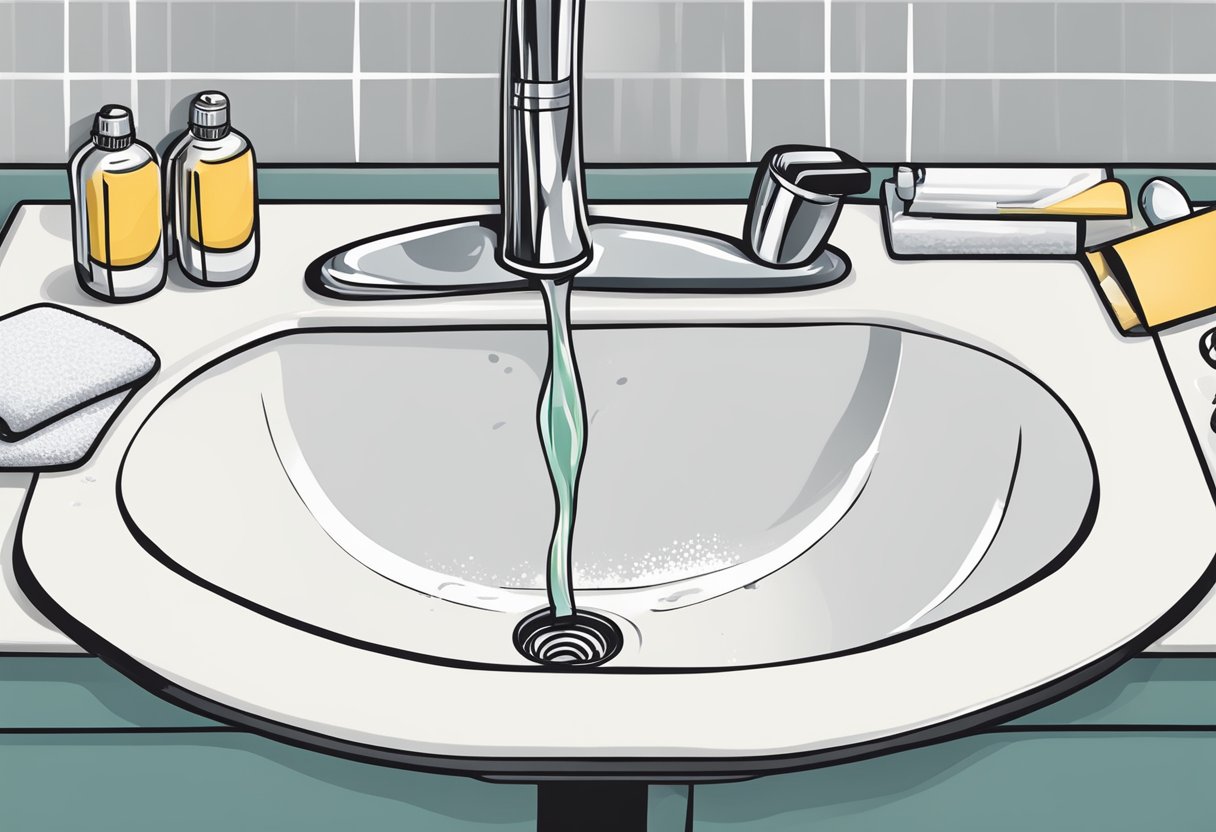
As someone who has experienced the hassle of a clogged bathroom sink drain, I know how important it is to take steps to prevent future clogs. Here are some tips to keep your sink drain flowing smoothly:
Proper Disposal of Substances
One of the easiest ways to prevent clogs is to be mindful of what you put down the drain. Avoid pouring grease, oil, or fat down the sink, as they can solidify and cause blockages. Instead, wipe them up with a paper towel and dispose of them in the trash. Also, avoid putting food scraps, coffee grounds, or other solids down the drain, as they can accumulate and cause clogs.
Use of Drain Guards
Another effective way to prevent clogs is to use a drain guard. These small, mesh screens fit over the drain and catch hair, soap scum, and other debris before they can enter the pipes. Simply remove the guard and dispose of the collected debris in the trash. Drain guards are inexpensive and can be found at most hardware stores.
Regular Cleaning
Finally, regular cleaning of your sink drain can help prevent clogs. Pouring boiling water down the drain once a week can help dissolve any buildup of soap scum or other substances. You can also use a biodegradable pipe cleaner to break down any organic matter in the drain. Additionally, using bacteria that breaks down organic matter in your drains can help prevent clogs.
By following these simple tips, you can keep your bathroom sink drain clear and avoid the hassle of future clogs.
When to Call a Professional
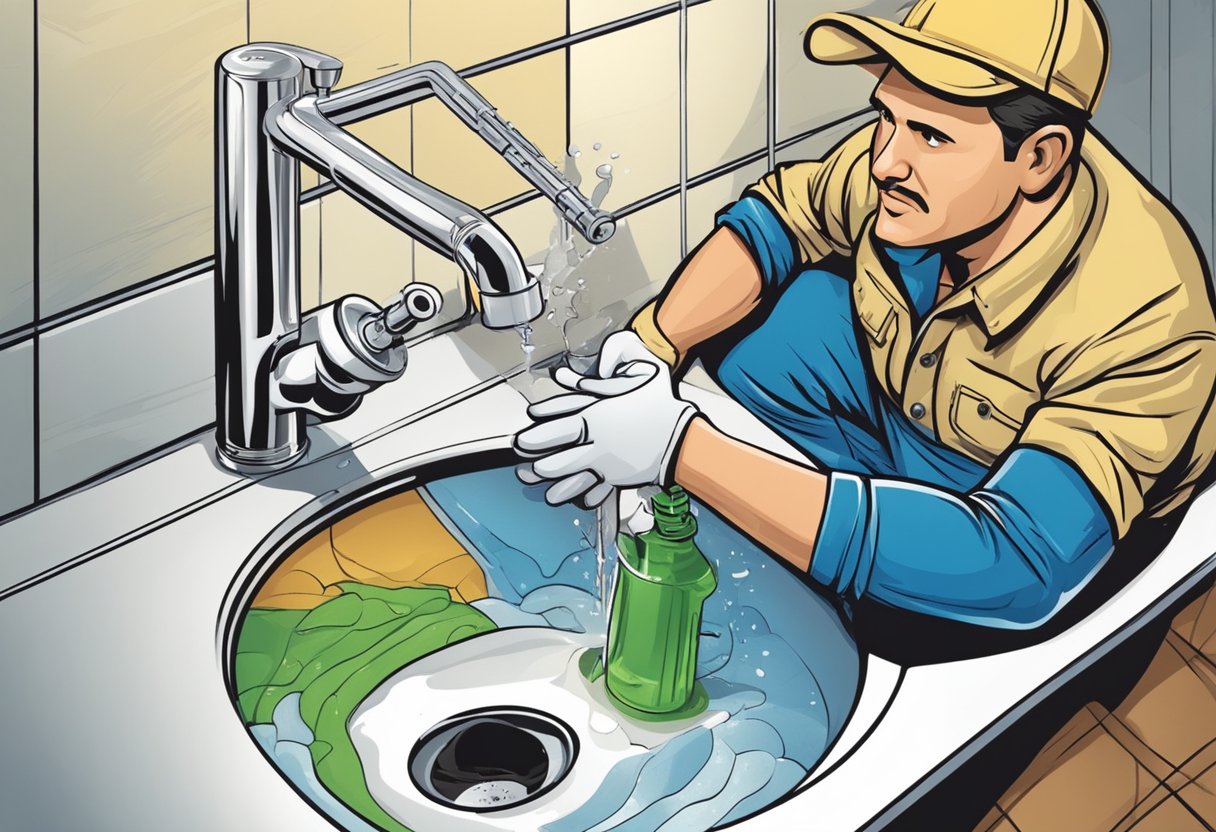
If you’ve tried all the methods mentioned above and your bathroom sink drain is still clogged, it might be time to call a professional plumber. A licensed plumber has the necessary tools and expertise to diagnose and fix more complex plumbing issues.
Additionally, if you notice any of the following signs, it’s best to call a plumber right away:
- Water is backing up into other drains or fixtures in your home, such as the kitchen sink or toilet.
- You hear gurgling sounds coming from your plumbing system.
- Your shower drain is also clogged, indicating a larger plumbing issue.
Ignoring a clogged sink drain can lead to more severe plumbing problems down the line, such as burst pipes or water damage. So, it’s best to call a professional plumber sooner rather than later.
Remember, while DIY methods can be effective, they are not always a permanent solution. A licensed plumber can ensure that your plumbing systems are working correctly and prevent any future issues from occurring.
Conclusion
https://www.youtube.com/watch?v=y6UcZa0fRNQ&embed=true
In conclusion, cleaning a clogged bathroom sink drain is not a fun job, but it’s something that needs to be done regularly to prevent nasty clogs and backups. The best way to clean a bathroom sink drain is by performing regular maintenance.
Some effective methods to clean a clogged bathroom sink drain include using a plunger, pouring boiling water down the drain, using baking soda and vinegar, and using a drain snake or auger.
It’s important to note that not all methods will work for every clog, so it’s essential to try a few different methods before calling in a professional plumber. Also, be sure to wear gloves and protective eyewear when handling any chemicals or tools.
To prevent future clogs, make sure to clean your sink drain regularly by removing debris from the sink drain every week to prevent the build-up of hair and scum. Cleaning the drain stopper is one of the best ways to avoid a slow drain.
Finally, if you have tried all the methods and still can’t unclog your sink drain, it’s time to call in a professional plumber. They have the right tools and expertise to get the job done quickly and efficiently.
Frequently Asked Questions
https://www.youtube.com/watch?v=z13X3maPUAA&embed=true
What are some effective ways to unclog a bathroom sink?
There are several effective ways to unclog a bathroom sink. One method is to use a plunger to create suction and force the clog out. Another method is to use a drain snake to physically remove the clog. You can also use a mixture of baking soda and vinegar to dissolve the clog.
Can I use Drano to unclog my bathroom sink?
While Drano is a popular drain cleaner, it is not recommended to use it on a bathroom sink. Drano can damage pipes and cause more harm than good. It is best to use a safer and more effective method, such as a plunger or a drain snake.
What is the best tool for unclogging a bathroom sink?
The best tool for unclogging a bathroom sink depends on the type of clog. A plunger is great for removing clogs caused by hair or soap scum. A drain snake is better for removing more stubborn clogs. It is important to use the right tool for the job to avoid causing damage to your pipes.
How can I unclog a bathroom sink using vinegar?
To unclog a bathroom sink using vinegar, start by pouring a pot of boiling water down the drain. Next, pour a cup of baking soda down the drain, followed by a cup of vinegar. Cover the drain with a plug and let the mixture sit for about 10 minutes. Finally, flush the drain with hot water.
What is the best method for clearing a slow bathroom sink drain?
The best method for clearing a slow bathroom sink drain is to use a mixture of baking soda and vinegar. Pour a cup of baking soda down the drain, followed by a cup of vinegar. Cover the drain with a plug and let the mixture sit for about 10 minutes. Finally, flush the drain with hot water.
How do I clean a bathroom sink drain?
To clean a bathroom sink drain, start by pouring a pot of boiling water down the drain. Next, pour a cup of baking soda down the drain, followed by a cup of vinegar. Let the mixture sit for about 10 minutes. Finally, flush the drain with hot water. Repeat this process every few months to keep your drain clean and clog-free.
